| Anti-Submarine
Warfare
Fighter Squadron One |
Administration and Personnel Offices
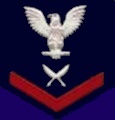 |
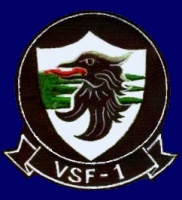 |
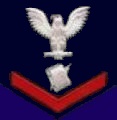 |
September 29, 1966 - May 20, 1967
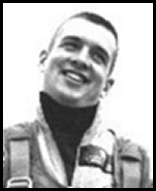
Author CDR Robert R. 'Boom' Powell (Retired) Part I -- Part II |
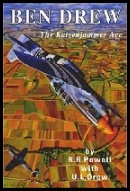 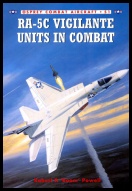 |
Administration and Personnel Offices
September 29, 1966 - May 20, 1967 |
|
The VSF Story Part I
|
Spring 2006, Volume 12 - Number 2
Designed to deliver one bomb over long distances, by 1961 the Douglas Skyhawk had proven itself as a capable ground attack aircraft. While maintaining a nuclear strike capability, Navy and Marine VA and VMA squadrons' primary role had become destruction of land and sea targets with conventional ordnance. That year, the A-4's talents as an air-to-air fighter were first used in the VSF mission.
Carrier-based ASW did not begin as a specialty. During WW2 all aircraft were used for Anti-Submarine patrols; even the fighters. By the Korean War, the increased capabilities of submarines demanded specialized aircraft to detect, track and combat them. The Grumman Avenger, which began life as a torpedo bomber, was heavily modified to become the first dedicated carrier-based ASW airplane. The large and short-lived AF Guardian, which operated in a team requiring two aircraft, followed before the multi-crew, multi-engine Grumman S2F Tracker dominated ship-based ASW for the next two decades. Specialized carrier air wings, CVSG, consisting of two YS (S2F) and an HS (helicopter) squadron plus detachments for early warning and ECM were created. A CVS with surface combatants and friendly submarines formed an ASW Task Group and usually operated far from air protection from shore or attack carriers, CVA. The threat from Soviet long-range maritime aircraft was significant and fighters as part of the CVSG was the answer. The concept was developed on three deployments. VF(AW)-4 Det 50 operated F9F-5 Cougars from Antietam (CVS-36) in late 1956 before that carrier became the full-time training carrier in Pensacola. VA-44 had later model Cougars (F9F-8s) on Wasp (CVS-18) in late 1957 and Det N of VF-92 flew F2H-3 Banshees from Yorktown (CVS-10) October 1958 to May 1959. The fighter detachments worked well, and more were planned. However, the new, more capable fighter aircraft in the Navy inventory were also larger, heavier and faster. In 1960 all eight CVS had hydraulic catapults and limited deck space; they were simply not able to operate fighters like the Demon, Skyray or Crusader. Enter the A-4 Skyhawk. The nicknames of the Douglas A-4, "Scooter," “Tinker Toy," and "Heinemann's Hot Rod," reflected its small size, light weight and agility. VA-34 provided the first detachment of Skyhawks (A4D2/A-4B) during Essex (CVS-9) 1961 Atlantic deployment. The "Blue Blaster" Skyhawks carried a centerline fuel tank, two AIM-9 Sidewinders, and their two 20mm cannon for use in the air defense role. This load-out would remain standard. Eleven more detachments with A-4s on CVS followed. VA-64 had a detachment of A-4Bs in Wasp February to June 1962 before the whole squadron embarked in Independence (CVA 62) for the Cuban quarantine. VA-22 provided four A-4B Skyhawks, six pilots and forty-eight enlisted men (a typical VSF det size) aboard Kearsarge (CVS 33) June to December 1963. Highpoint of the Pacific deployment was recovery of space capsule Faith 7 and astronaut Gordon Cooper. The Marine Corps had their first det in 1963. Unfortunately, Essex was in a horrific storm returning from the Med and the steel mast broke off the top of the island. One of the yardarms punched a hole through a H&MS-32 Det Skyhawk and the wooden flight deck. A plane load of jet fuel splashed over the flight deck and drained down into the hangar bay. Fortunately, there was no fire. On the same deployment a Soviet Tu- pg. 6 Spring 2006 - Skyhawk Association
The "Black Sheep" of VMA-214 went to WestPac in Hornet (CVS-12) as part of CVSG-57 October 1963 to April 1964, with A-4Bs. The VA-34 "Blue Blasters" had overlapping dets in Randolph (CVS-15) and Intrepid (CVS-11) from late 1963 into 1964. The Skyhawks turned out to be useful in the ASW role as well. With their speed they could search wide areas, or speed out to a contact much faster than the S-2. Nor did submarines expect a threat from high altitude. The Scooter pilots carried cameras and became proficient at low passes to rig ships. VA-93 had Det Q in Bennington (CVS-20) February to September, 1964. Bob Krall (who later was assigned to NARF Alameda and flew 637 different Skyhawks 1961-68) said, "The deployment at Yuma shooting at a banner towed by a T2V Seastar didn't produce any results that the det pilots could brag about at a fighter pilot bar. Regardless of boresighting, the A-4 guns were not suited for air to air gunnery." VA-153 Det R in Kearsarge made a fast turn in December 1964 to join the parent "Bluetail" squadron for deployment to WestPac in Coral Sea (CVA-43). The "Stingers" of VA-113 formed Det Q for Bennington in 1965. Marc Pierce, who later would join VSF-1, remembers training with the RAG, VF-124, in Miramar; A-4s against F-8s with a TF-9 Cougar that towed the target for air-to-air gunnery. "Even with a fixed gunsight, the Skyhawk pilots did better than the Crusaders with lead computing sights, although experienced pilots versus replacements new in the aircraft may have had something to do with it." Like all the CVS (except Intrepid) at the time, Bennington had hydraulic catapults restricting the A-4 to only a 150 gallon centerline tank with two AIM-9 missiles. During the deployment to WestPac, VA-113 Det had the unique opportunity to be the first Skyhawk to land aboard the Australian aircraft carrier, HMS Melbourne. (Later, the Australian navy operated A-4 squadrons of its own.) With the situation in Vietnam getting tense, VA-113's Det also did a fast turn to go aboard Kittyhawk (CVA-63) with the rest of the squadron in October 1965, for early strikes into North Vietnam. The same year VMA-223 "Bulldogs" Det T of A-4Cs finished a deployment in Yorktown and immediately moved to the new Marine base at Chu Lai. Marine Air Group 15's Headquarters and Maintenance Squadron deployed to the Tonkin Gulf in Hornet as 1965 became 1966. The six pilots flew bomb strikes from Ticonderoga (CVS-14), Midway (CVA-41) and Ranger (CVA-61) as well as their carrier protection mission, and all became Hornet centurions. On a wry note, their A-4Cs were named for ladies of dubious reputation: Fanny Hill, Polly Adler, Ko Sisters and Mamie Stover. (See sidebar.)
The first VSF commanding officer was CDR Charles E. Waring who had been a flying midshipmen out of the V12/V5a program. He had flown sixty-five missions in F4U-4 Corsairs in Korea in VF-54 from both Philippine Sea (CVA-47) and Valley Forge (CVA-45) when the ships swapped airwings. He made Midway's round-the-world cruise in VF-174 flying F9F Cougars and was XO of VA-155 with A-4A/Bs in WestPac in Coral Sea. Recently promoted after 2 1/2 years in Izmir, Turkey, pg. 7 Skyhawk Associaltion - Spring 2006
The first pilots went through an abbreviated syllabus in Lemoore (Since Waring was already A-4 qualified, he left VA-125 after only two refresher hops) and included a former P2V Neptune pilot who did not go through the RAG at all. (He was later killed in a ramp strike after finessing orders to a VA squadron.) Later pilots went through the entire attack/nuke delivery syllabus with the bonus of earning per diem while in Lemoore as their final orders were to NAS Alameda. The eagle head in the squadron insignia was adapted from the Waring family silverware with green slashes added to match the painted portion of the A-4's rudder. Waring argued that as a fighter squadron, VSF-1 should have red as the squadron color. Although the powers-that-be decreed otherwise, the skipper's airplane always seemed to have red where the rest of the squadron was painted green. Aircraft side numbers were two digits beginning with the CO's 70 and eventually reaching into the 90s while the letter code was NA. Squadron jokesters claimed it stood for "Not Applicable."
A SAR helicopter crew had rescued an injured Red-tailed Hawk (Buteo jamaicaensis) and taken the bird back to NAAS Fallon. Navy corpsmen removed the birdshot, but its wing was damaged and sustained flight impossible. Since the hawk could not be released to the wild, the folks at Fallon kept it. As with all large birds, there were sanitary and feeding problems. The Commanding Officer of Fallon, Capt Oliver, was wondering what to do with his charge when the brand new VSF-
pg. 8 Spring 2006 - Skyhawk Associaltion
A hawk looks like an eagle, especially a stylized one. And the squadron flew Skyhawks. Perfect. A small ceremony was arranged, with photographers, and the hawk was officially presented as the mascot for VSF-1. How could the CO, Charlie Waring, refuse? The sex of the bird was never determined, but it was soon named "Charlie Eagle." The airframes shop built a large cage and placed it at the back of the ready room on the second deck. Charlie's diet was typically raw liver with an occasional lizard that Maintenance Officer Phil Dougherty's nine kids caught. Charlie's gory mouse meals became a part of initiating new men into the squadron.
Eager to develop the fighter mission, Charlie Waring arranged weapons detachments to NAAS Fallon and MCAS Yuma, set up ACM practice, fired AIM-9 Sidewinders and had "Rudolf' built. Rudolf was an A-4B (BuNo 145002) that had an F-8 air-to-air radar "borrowed" from the China Lake Weapons Center and installed by NARF Alameda. The unique, longer nose (modified from a F-11 Tiger's) was painted red and the name followed soon after.
Next time: How
it all changed--and changed again. The two VSF squadrons (four, counting
Navy reserve squadrons) deployed only one detachment in its intended role,
but went to sea as normal AtkRons. Later, the "Blackbirds" of VA-45, a
Fleet Replacement Squadron, came closest to the original VSF concept on
the last CVS cruises. Stay tuned for Part 2 in the following issue of the
A-4Ever!
pg. 9 Skyhawk Associaltion - Spring 2006 |
Support
the NAS Alameda Naval Air Museum and the USS Hornet Museum
bswanson7@sbcglobal.net
![]()
![]()
| Site
Search
|
Carrier Air Wing 8 (CVW-8) - 1966/1967 Cruise
|